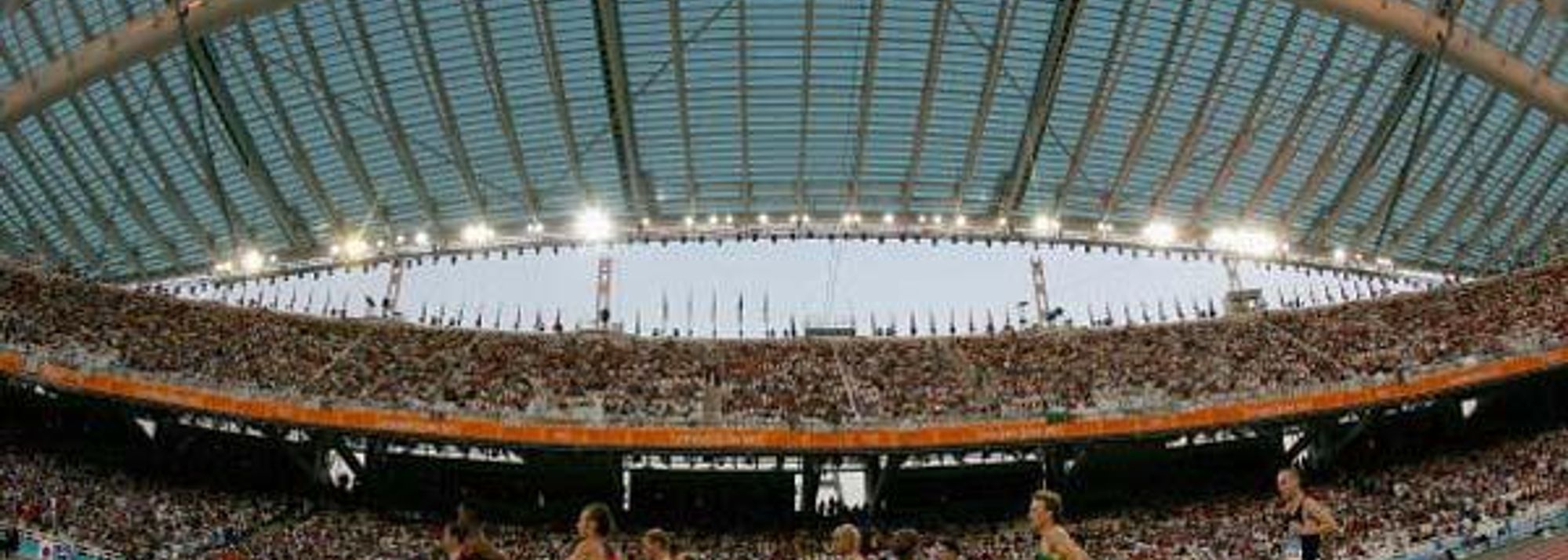A general view of a packed Olympic stadium in Athens (© Getty Images)
Jim Dunaway who has attended every Olympic Games since Melbourne in 1956 brings his own weathered eye on what’s been happening in and around the Athletics events at the Games of the XXVIII Olympiad.
------------
Television is the biggest difference. Television has brought the Games to billions of people all over the world. It has also brought billions of dollars to the Olympics, and sponsors have added billions more. And of course, security uses it up about as fast as the IOC can raise it.
But on a more personal level, here are some of the things that I notice that are different today from the way they were 48 years ago.
The media: in Melbourne the U.S. was allotted 70 press box seats, all writers, and there were no radio or TV people at all. Today; there are more that 500 American reporters in the press box, plus a couple of hundred more editors and technicians in the press centre (somebody has to fix those bleeping computers!). There are also more than 3500 U.S. TV people here, from commentators and statisticians to cameramen and techies, and many more thousands from the rest of the world.
The Melbourne Games were sort of like a very big county fair, like the ones we still have in some parts of the United States. It was definitely NOT a worldwide media event.
The Melbourne track was six lanes wide, made of a patent composite named En-Tout-Cas, which was reputed to hold up better in rainy weather than the conventional cinder tracks of the day. The Olympics went to eight lanes in 1964, and to synthetic tracks (like today's Mondo) in 1968 at Mexico City.
There were a lot fewer women's events in 1956. No women's races longer than 200 meters, no women's pole vault, triple jump or hammer throw.
You can not only see a lot more women in the Olympics these days, you can also see a lot more OF them. Almost every female sprinter and jumper here competes in the equivalent of a two-piece bathing suit. And thanks to those uniforms, it's easy to see that they also all have washboard abdominal muscles. In 1956, hardly any of the MEN had abs of steel, never mind the women.
Reporting the Games was different, too. There was no television, no instant replays, no quickly printed results or flash quotes distributed to the press box. You had to really watch what was happening in each event, write down what you saw, and then write about it on your portable typewriter, take it to the telegraph office in the stadium for transmission to your newspaper.
Technology has changed all that.
Jim









